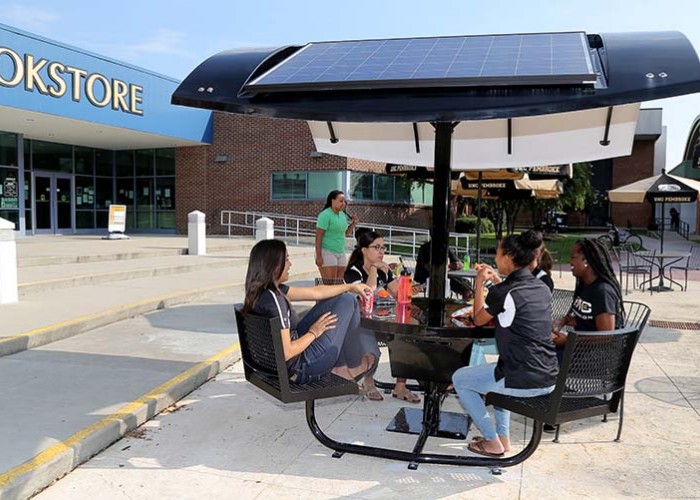Co-op Tech: From Pork to Power
A Harnett County hog farm hosts a new co-op microgrid
The new Butler Farms microgrid, dedicated in May, integrates renewable biogas, solar generation, energy storage and other components to produce electricity that can be used to power the farm and nearby homes.
Tom Butler didn’t intend to build a microgrid.
He’d originally thought covering the waste lagoons at his nearly 100-year-old family hog farm in Lillington, North Carolina, would help mitigate some of the negative effects the facility may have had on the community.
Like most hog farms in North Carolina — the nation’s fourth-largest hog producer — Butler Farms stores waste from livestock in a lagoon. A population of 7,500 to 8,000 swine creates about 9,000 gallons of waste a day. Covering the lagoons in 2008 greatly reduced odors from the farm, and Butler could use the captured methane to generate electricity. He consulted with his electric co-op, South River EMC in Dunn, in developing the local generation project.
“We’re taking a waste product and making it an asset,” he says. “It makes the waste a positive rather than a negative.”
Nearly 10 years later, Butler began working with South River EMC and North Carolina’s Electric Cooperatives to expand the project into something bigger: a functioning microgrid. The new system, dedicated in May, integrates renewable biogas, solar generation, energy storage and other components to produce electricity that can be used to power the farm and nearby homes.
During normal conditions, the microgrid will connect to South River EMC’s distribution system to supplement and diversify traditional power resources. During outages, it can operate in “island mode” to power Butler Farms and surrounding homes.
“South River EMC has a long-standing partnership with Butler Farms, and we have taken great interest in their pursuit of cleaner farming techniques with less negative environmental impacts as well as the implementation of several renewable energy resources,” said Catherine O’Dell, vice president of Member Services & Public Relations at South River Electric Membership Corporation.
The project will bring additional reliability to an already very reliable system in the local area. It also provides an opportunity to test the integration of new grid resources and technologies and serves as a case study for how agriculture and electric utilities — two of North Carolina’s most important industries — can work together to enhance the state’s rural communities.
“Electric cooperatives are rooted in our state’s rural areas and are dedicated to finding innovative energy solutions like this that will not only provide reliable power, but also encourage economic development, promote environmental sustainability and improve quality of life in rural communities,” said Joe Brannan, CEO of North Carolina’s Electric Cooperatives. “This project helps us achieve all those goals by allowing us to collaborate with an agricultural partner to implement new technologies that leverage the opportunities and challenges faced by both industries.”
The Butler Farms project is the second co-op microgrid in the state. Another microgrid in operation on Ocracoke Island was developed through a partnership between Tideland EMC and North Carolina’s Electric Cooperatives. To learn more, read A First for the State.
-
More energy innovation
-
Share this story:










